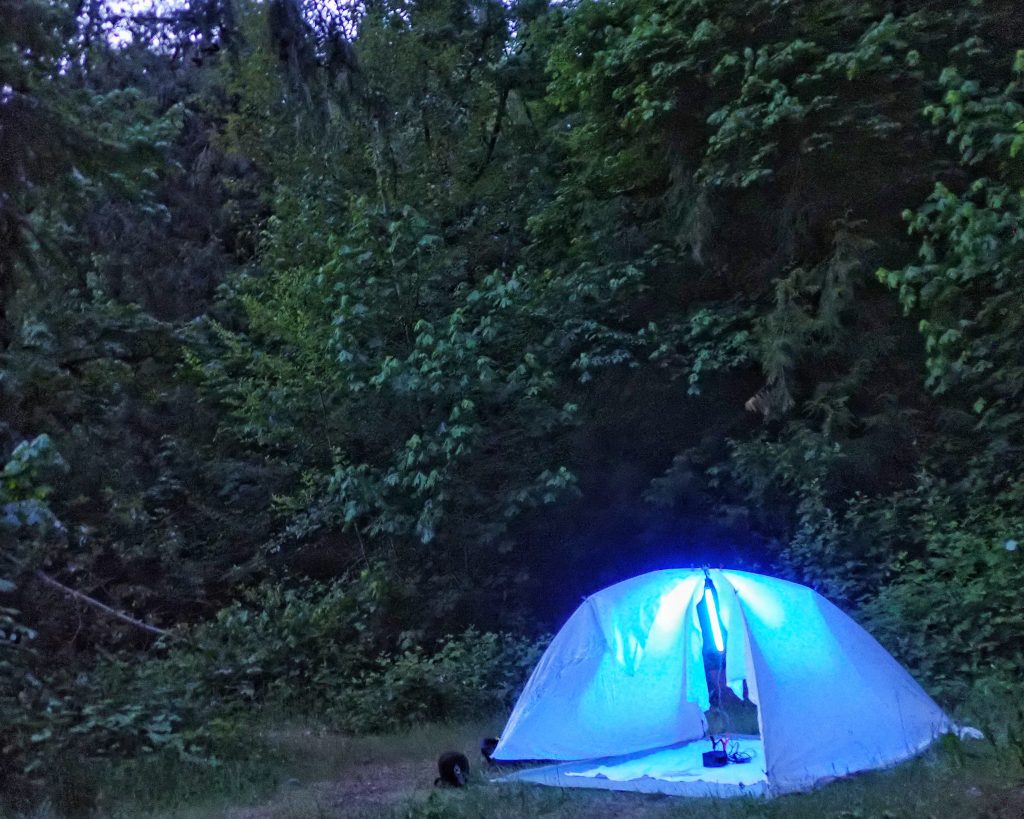
For this last adventure of the 9 earthly revolutions that constitute moth week, a period during which I’ve tried to discover and show some of the diversity to be found in a fairly limited region in that group of Lepidoptera we call moths, I’m up in ne Clark County along the banks of Canyon Creek. I’ve only run lights in this location once before, and that was in early June of this year ( I talk about that trip in the blog A Trip to Canyon Creek , from which I’ve shamelessly stolen the photo above since I forgot to take one this time and my setup is in the same location). I have had some spectacular nights of UV bugging in this area, but they were upriver a few miles, and somewhat above the creek. I mention that because at 8:45, when the sun set and I fired up the lights, it was 66⁰ in this creekside meadow. But up at my van, parked along the main road a couple hundred yards from the creek, it was 71⁰. It’ll be interesting to see what the temperature difference is between the two spots when I pack up tonight. I’ve got clear skies and moonrise for the nearly full moon will probably be about 10pm here at the bottom of the valley.
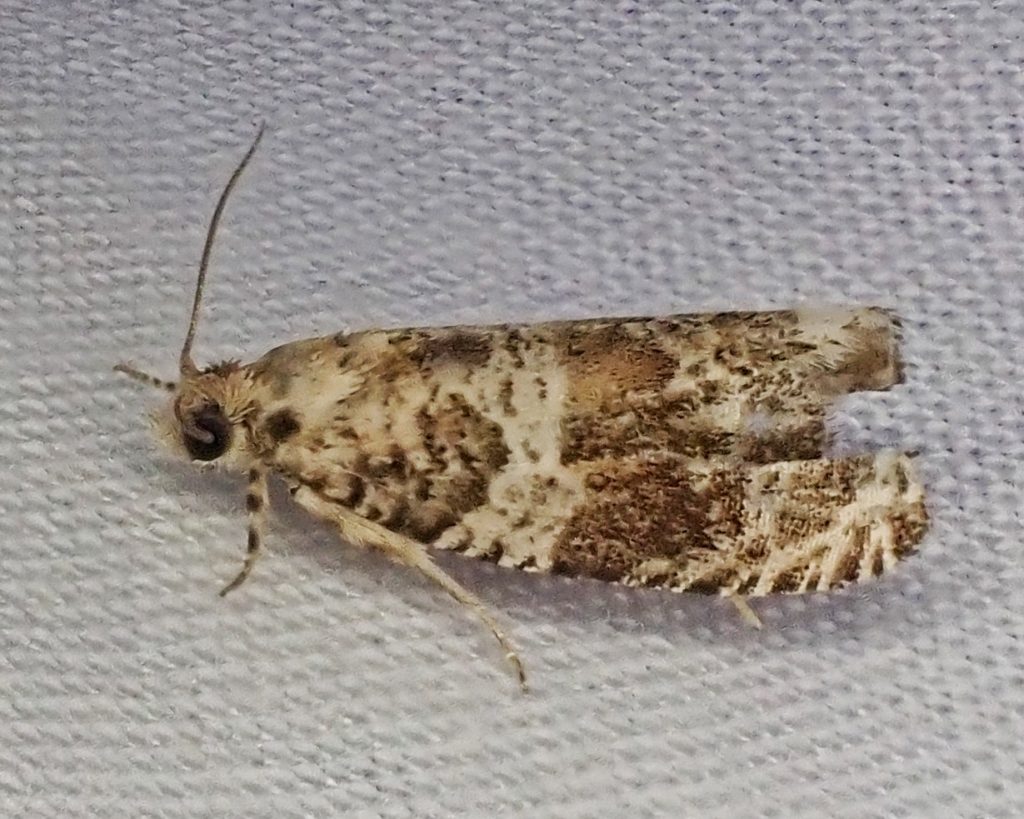
I’m hoping that a riparian habitat will harbor at least a slightly different set of moths than I’ve seen the last two nights. There are still plenty of conifers on the hillside, but along the creek it’s mostly willows, alder, maple, and a fairly large patch of Himalayan blackberries, through which runs an overgrown path to another, smaller open area, a path on which I spent a half hour pruning back those blackberries so I wouldn’t bleed too much going to check my satellite set up in the other meadow.
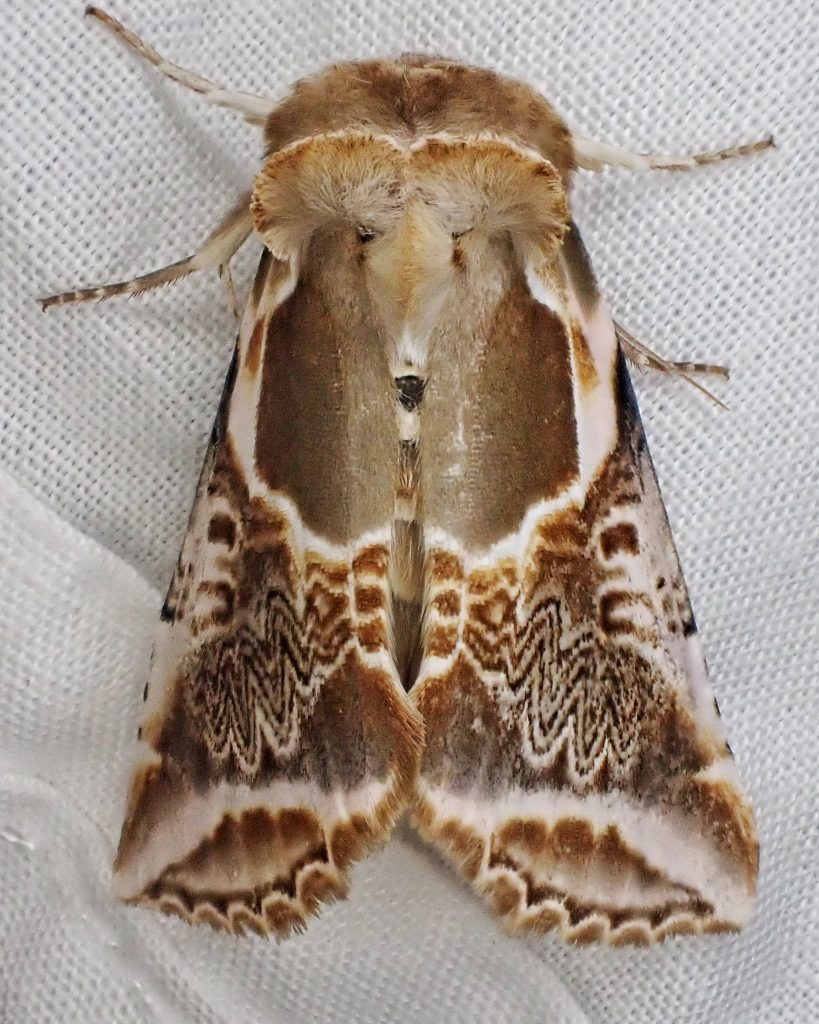
9:41- There are moths coming in, but so far it’s just the usual suspects- Herpetogramma abdominalis, Perizoma curvilinea, Idaea dimidiata, Oedemasia semirufescens, Zanclognatha jacchusalis, and something I’ve finally, thanks to Carl Barrentine, come to recognize as a worn Aseptis binotata. I also have a rather spectacular number of tiny midges, and I may need to get a mask if I want to breathe amidst my sheets.
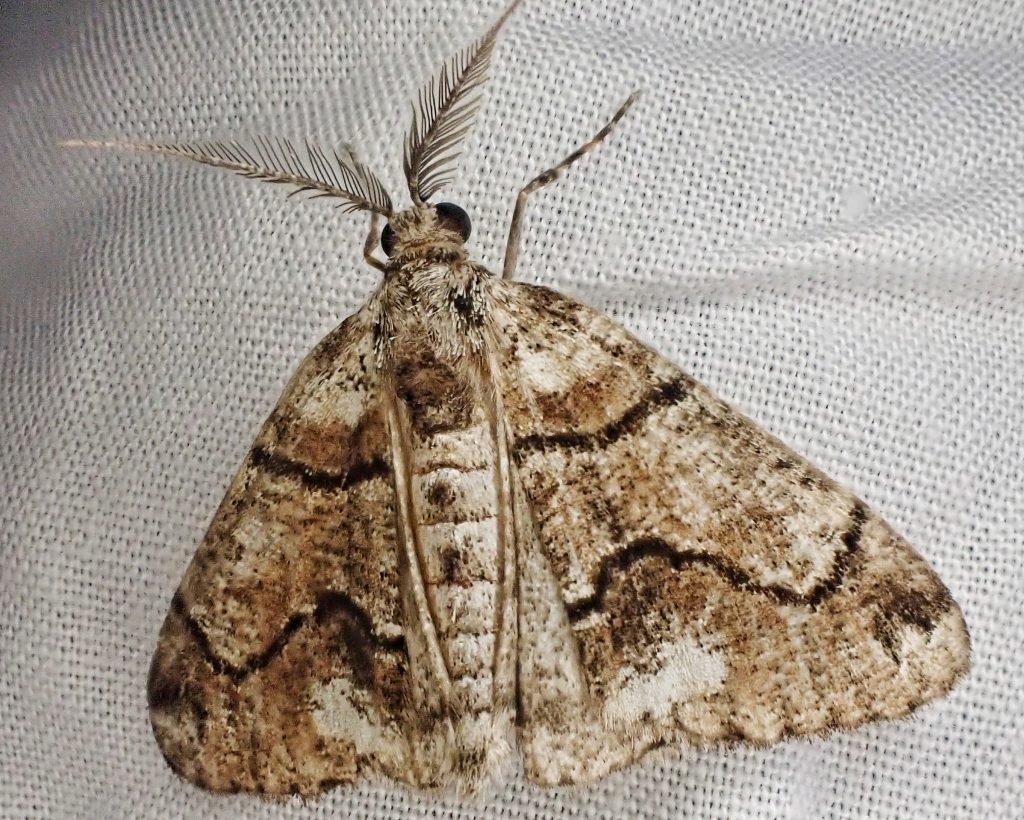
10:11- Getting some different moths now. There are a couple interesting Noctuids that look familiar but I can’t label, what I think is a Dysstroma sp [ETA- I was wrong- it is Mesoleuca ruficillata] that I haven’t seen before, and a little owlet of some sort. I’m not seeing the numbers that I saw at Lake Merwin on Friday night, but there seems to be a good diversity. Temperature is down to 59⁰, but I’m continuing to get new arrivals, and like I said when I was at Bear Prairie, montane moths that can’t handle cool nighttime temperatures are not going to survive for long.
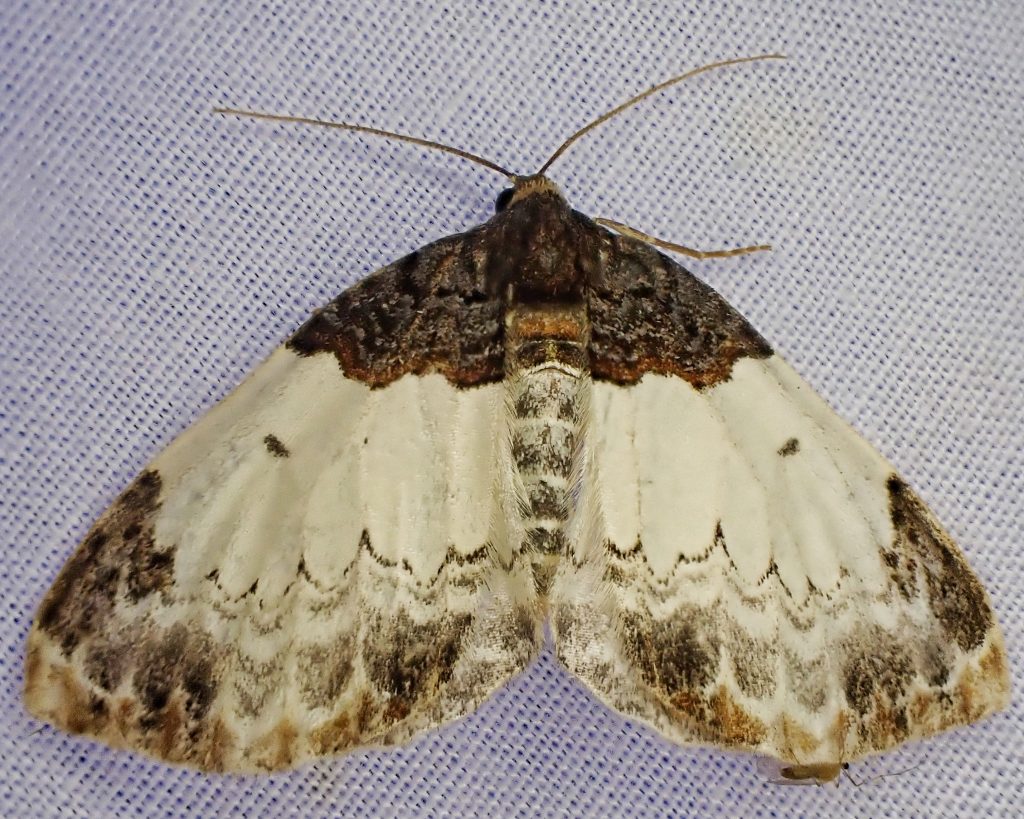
11:06- I had to make the trek up the hill to the van and get me a mask. I’m happy to have those little midges, and happy for the protein they provide to the ecosystem, and I wish I had the knowledge and more importantly the patience to try to identify them, but I can’t handle breathing them. And as long as I was attending to my comfort I grabbed a light coat, since it’s just silly to shiver needlessly, and the temperature is down to 56⁰. But I’m finding new visitors every time I check the sheets, one of which looks a lot like a few very fast, very spooky little Udea looking crambids [ETA-wrong again- this is a little noctuid called Galgula partita] that I’ve dubbed ‘frowny faced moths’, both for the way they look and the way my face looks when they vanish before I can photograph them. This time I managed one photo before it split, but successfully containerized it a few seconds later [which didn’t end up doing any good because it flew off as soon as I dumped it from the container the next afternoon, even after 8+ hours of refrigeration].
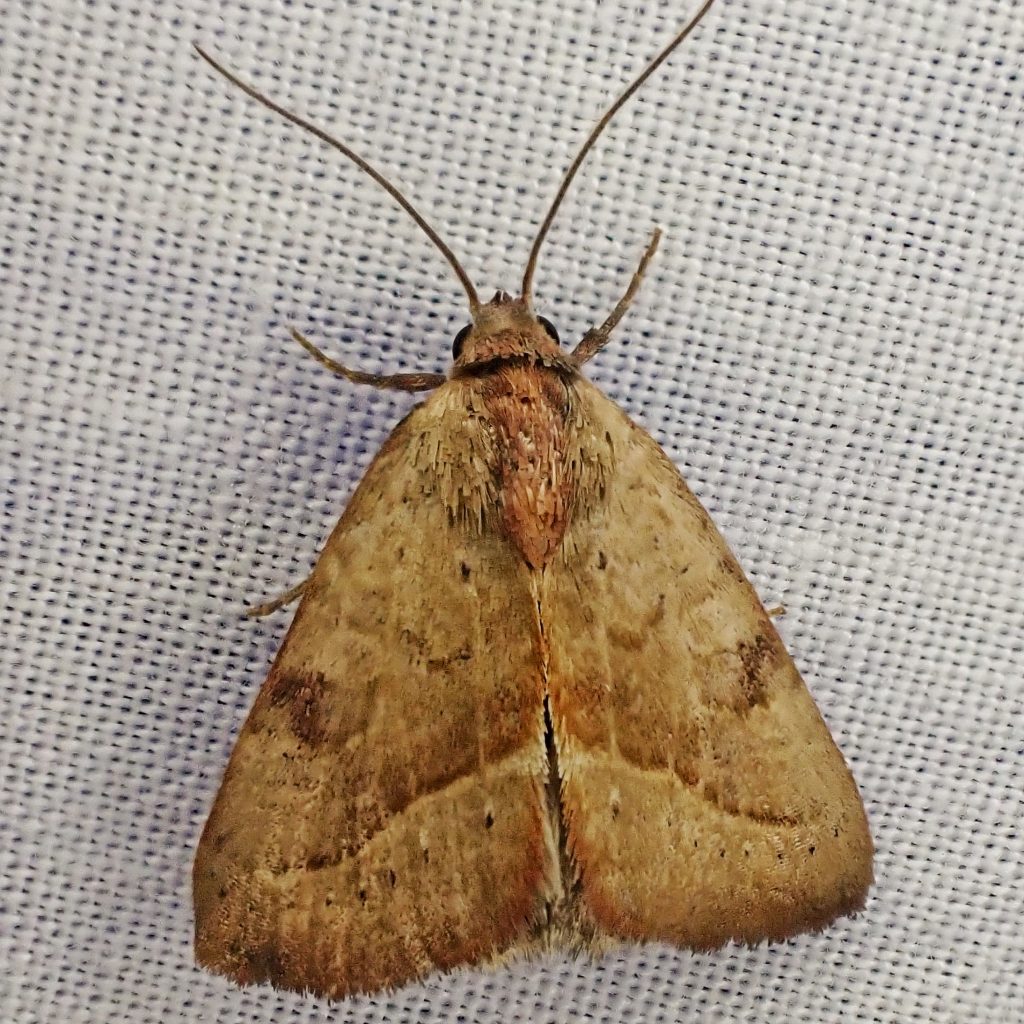
11:40- And then, like someone turned off a tap, it stops. No new species since my last round, and I don’t think there were even any new individuals. Temperature is down to 54⁰, but the moon is still blocked by the hills to the south. But I’m not giving up yet! It is probably hard for anyone who doesn’t love bugs to understand how fascinating running UV lights is for me. When things are coming in it’s like being given new presents constantly, even when they are familiar creatures. And then there are those real treasures, the new, the spectacular, the unusual. And even when I’m not getting new visitors, just being able to watch them is such a gift! I spend hours looking for bugs in daylight, sometimes finding some, and sometimes not. But UV lights are like a magic summoning tool, and all these fascinating little creatures leave their hidden spaces and come to me, where I can stare at them and photograph them, and puzzle over their identity, and wonder about the lives they lead. And, looking at these marvels of metamorphosis, whose adult life of flight and freedom lasts but days and comprises only 1/20th of their whole lifespan, to ponder the ephemeral nature of life in general and appreciate the time I get to spend following my passion.
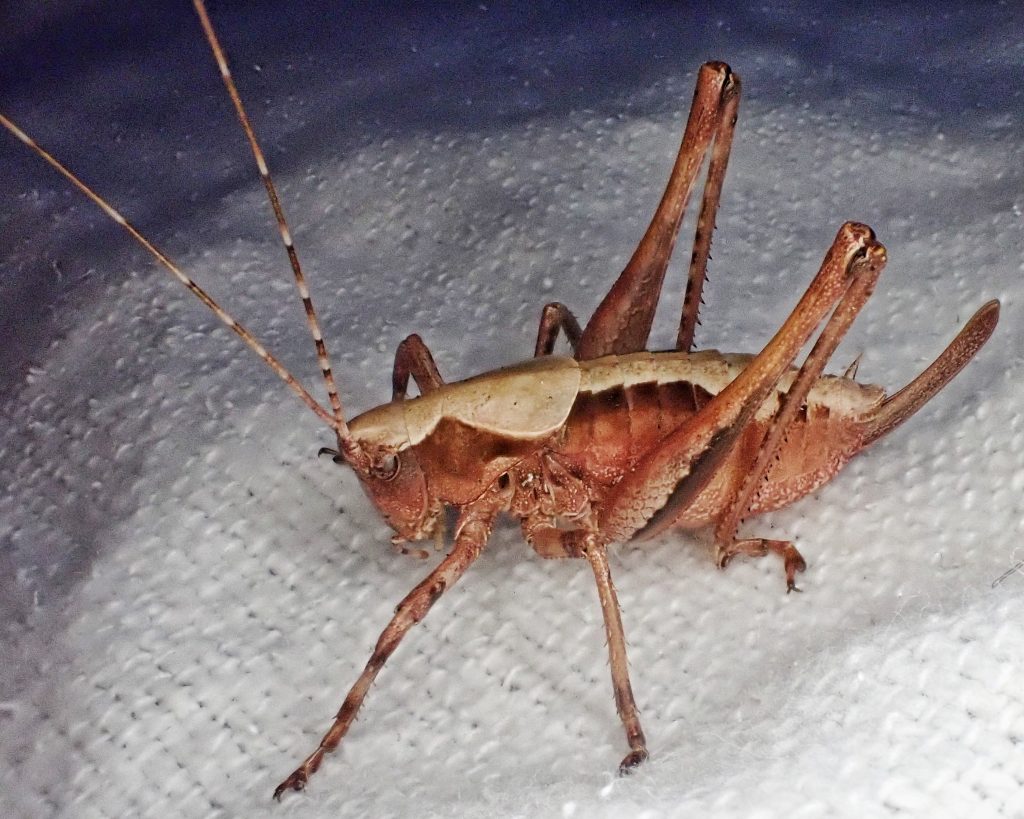
12:19- Apparently my equipment didn’t get the memo about me not giving up, because my main light just winked out. It seems this SLA battery doesn’t hold a charge very well anymore. I thought about going up to the van and getting one of the big car batteries, but really, I think it’s time to quit. Not much action at the lights anyway, and by the time I get packed up and haul all this gear to the van it’ll be at least another hour. I was wondering as I drove up here whether Moth Week would end with a bang or a whimper, but instead it just ended. Well, I best get to work.
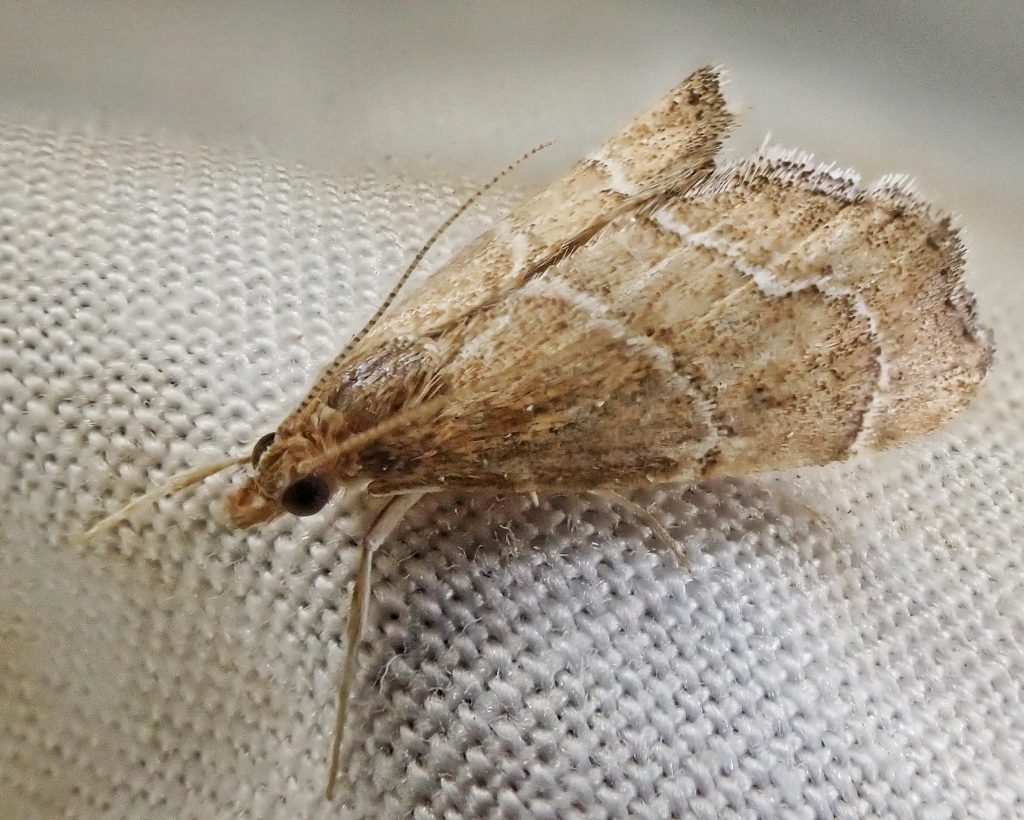
1:44- It took a little more than an hour because I did find a couple hidden moths, which got me looking for more, and I just ain’t moving that fast. The temperature down by the creek was 50⁰ when I gathered my thermometer, and at the van it is 55⁰. I wouldn’t have been surprised by that if I’d thought about cold air pooling and this canyon originating well up in the Cascades. I also wonder if it’s more than just the temperature that is different. Maybe the higher humidity coupled with cold temperatures makes it harder for the moths to warm up to flight temperature. I need to find a spot where I can set up by the water and a couple hundred feet above it, and see if there is actually a difference in numbers, diversity, and how late in the evening they fly.
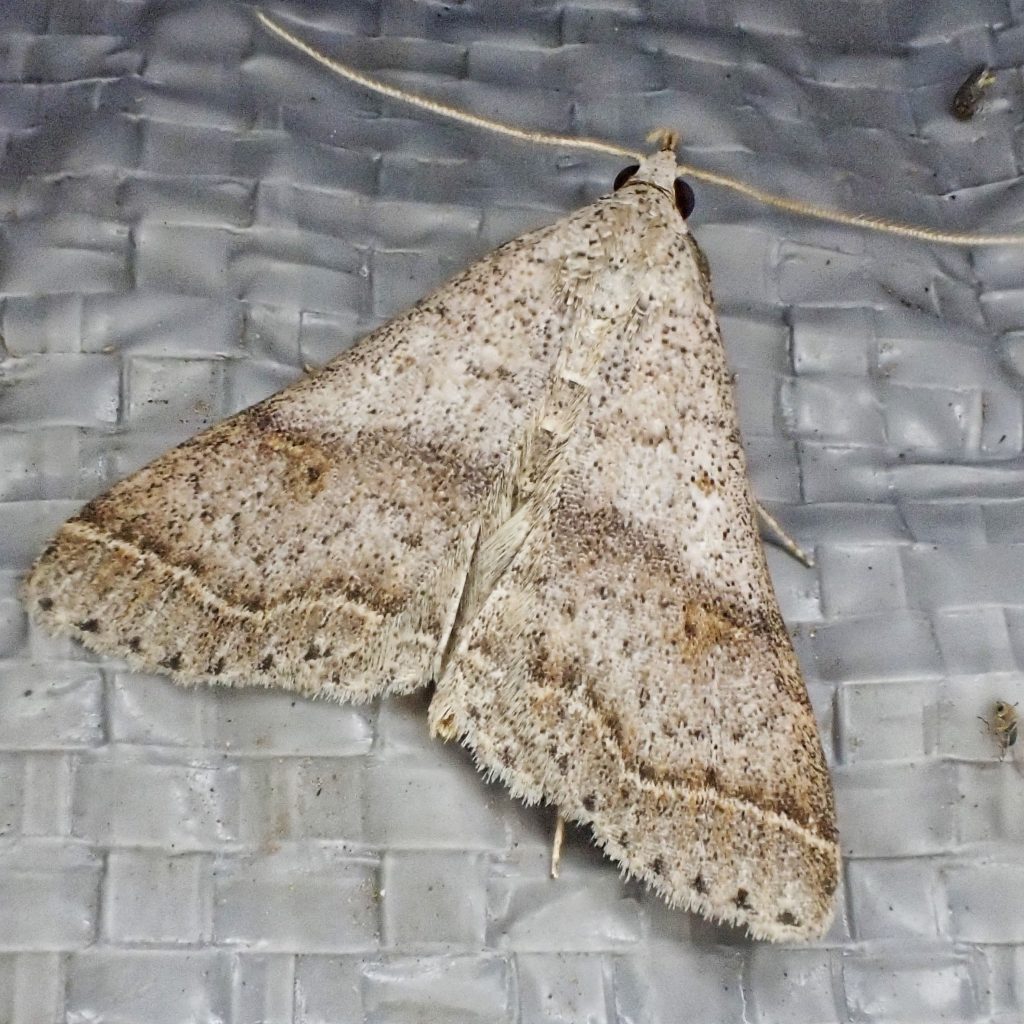
Moths new to this tally that I found on Sunday, July 30, 2023;
Crambidae;
Stegea salutalis
Anania tertialis
Drepanidae;
Habrosyne scripta (Lettered Habrosyne)
Erebidae;
Bleptina caradrinalis
Geometridae;
Gabriola dyari (Dyar’s Looper)
Mesoleuca ruficillata
Perizoma grandis
Noctuidae;
Galgula partita
Tortricidae
Orthotaenia undulana
That pushes the count to 111 species of moths found in Clark County during the 9 days of Moth Week. I hope to add a few when I really look hard at my photos, and I’ll post a complete list, as well as some additional thoughts on these experiences, in the next few days. Hope you all enjoyed reading about this as much as I enjoyed doing it and writing about it. Happy Moth Week to all, and to all a good light!
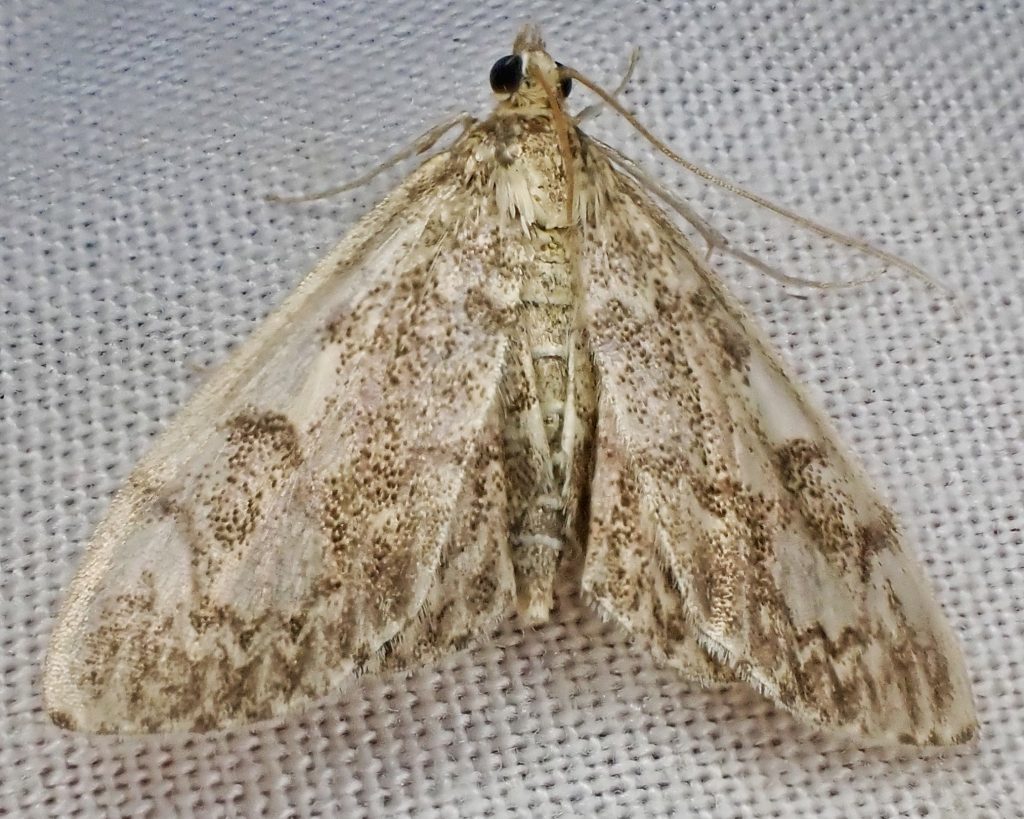
Your moth photos are visual miracles of pattern.
The subtle hues are remarkable.
I have no clue how I hooked up with your posts….but thank you for these daily offerings.
Anne from a fir forest in North Saanich B.C.
Thanks for your appreciation, Anne! All credit for the beauty goes to evolution and a good camera!
The patterns on some of these moths are amazing, especially the Habrosyne scripta. Ain’t evolution (and DNA ) just amazing!
Thanks for moth week, it was very entertaining!
Thanks for your appreciation, Sharon! Glad you enjoyed it!
Loved it thank you for the work you do.
Thank you for your appreciation, Teresa!
When it comes to a love and fascination for bugs, I can really identify with your log at 11:40.
Yes, John, they’re the gift that keeps on giving!